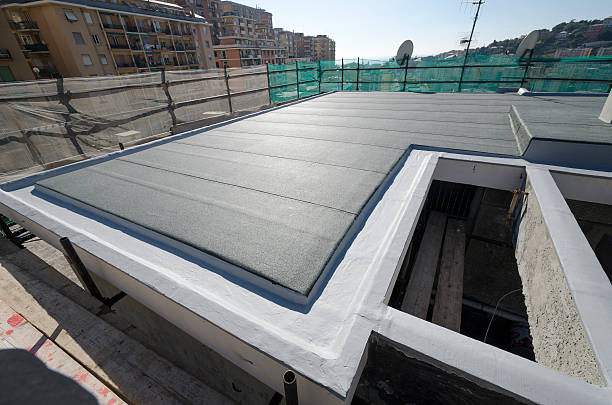
Choosing the right roof for your commercial building is an important decision that can affect not just the building’s appearance but its performance, longevity, and your bottom line. With so many options available, it’s easy to feel overwhelmed, but by considering a few key factors, you can make a choice that fits your needs, budget, and long-term goals.
When it comes to commercial roofing, there are a few main types to consider. Each comes with its own benefits, so let’s break them down.
The climate in your area plays a huge role in how long your roof will last. In colder climates, metal roofs are a great choice because they handle snow and ice really well. On the other hand, if you’re in a hot, dry region, single-ply membranes are great at keeping your building cool and energy-efficient.
In terms of longevity, some materials just last longer. Metal roofing can go strong for 50+ years, while single-ply membranes might last 20-30 years. It’s always wise to think about how long you want your roof to last and balance that with your budget.
No one likes high energy bills. So, if you want to save on heating and cooling costs, consider a cool roof. These roofs reflect more sunlight and absorb less heat, keeping your building cooler in summer. Metal and single-ply membranes are especially energy-efficient, which can help reduce your air conditioning costs.
Proper insulation under the roof is another key factor in making your building energy-efficient. It helps keep the inside temperature stable, reducing your heating and cooling needs.
Some roofs require a lot of upkeep, while others need very little. If you want to keep things low-maintenance, single-ply membranes and metal roofs are your friends. Built-Up Roofing (BUR) systems, while durable, require more regular maintenance, such as resealing or repairing leaks.
Think about how much time and money you’re willing to spend on upkeep in the long run when choosing your roof type.
While commercial roofs are mainly functional, you may also want a roof that complements the building’s appearance. A sleek metal roof can lend a modern, professional vibe, while tile or shingle roofs might suit buildings with a more traditional or rustic look.
Also, keep in mind the design of your building. If you’re going for a more modern, industrial look, a flat roof might work best. If you’re after something more classic, a pitched roof could be the way to go.
Of course, the upfront cost of installing a roof is an important consideration. Metal and tile roofs tend to be more expensive initially, but they can save you money in the long run thanks to their durability and energy efficiency. Single-ply membranes are usually more affordable to install, but you’ll want to think about the potential costs of repairs and maintenance over time.
Before you make a final decision, check out your local building codes. In some areas, certain materials may be required, or there might be restrictions on what you can install. Fire safety, drainage requirements, and insulation standards all come into play, so it’s important to follow the rules to avoid potential headaches down the road.
Choosing the right roof is no small feat, and it’s always a good idea to work with a professional roofing contractor who can guide you through the process. They’ll assess your building’s needs, help you understand your options, and provide a detailed estimate to ensure you make the best decision for your property.
When it comes to choosing a roof for your commercial building, there’s no one-size-fits-all solution. Consider factors like climate, budget, energy efficiency, and long-term maintenance. Whether you go for a flat roof, metal roofing, or something else, making an informed choice will ensure your building stays protected, efficient, and looking great for years to come.